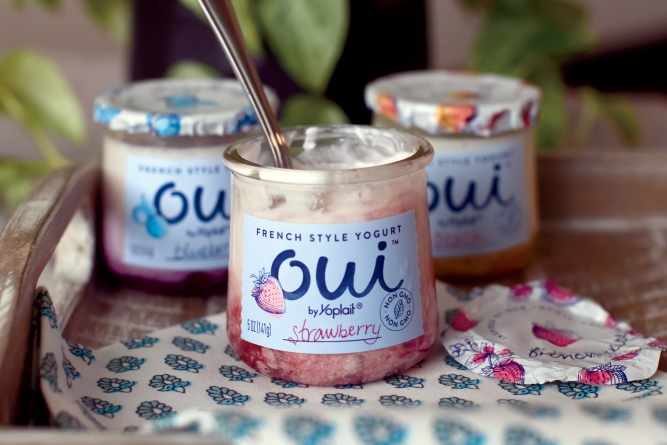Home > Michigan > Michigan Farm to Table > How Michigan Food Companies are Creating Packaging with a Purpose
How Michigan Food Companies are Creating Packaging with a Purpose
In partnership with: Michigan Department of Agriculture & Rural Development

Get ready to throw away much of what you know about food storage and shelf life. New technology is changing the way many foods are processed, packaged and stored, allowing them to travel farther and stay fresh longer on store shelves and in consumer homes.
New Processing Techniques
Michigan-based Clean Planet Foods now uses high-pressure processing to additionally pasteurize foods that have already been packaged, removing all microorganisms to make them safer and extend shelf life without adding preservatives. Owner Jack Aronson opened the Great Lakes High-Pressure Processing Food Innovation Center in Taylor, Michigan. The cold-pasteurizing technique used there removes all pathogens in food products, helping other businesses in the state to extend the expiration dates on their products, which consequently helps expand the market reach for food businesses.
Another example of innovation in processing is adding a low-temperature, short-time (LTST) treatment to milk that has already been pasteurized, destroying trace amounts of bacteria which may be left after traditional pasteurization. The result is milk that can last up to nine weeks without spoiling.
Packaging Innovations
Technology is also changing the ways foods are packaged. Dr. Muhammad Rabnawaz researches packaging technologies like polymer synthesis, high-barrier materials, active/smart coatings, hot-melt adhesives, and plastic-free paper for disposable cups and plates at Michigan State University. Rabnawaz uses ketchup bottles as an example of the way technology is improving food packaging. Today’s bottles contain a three layer plastic made up of polyethylene terephthalate (PET) and ethylene vinyl alcohol (EVOH).
“Some ketchup bottles typically carry PET/EVOH/PET three-layer plastic. The EVOH is used to prevent oxygen permeation into the product. The emergence of a new polymer known as PEF (polyethylenefuranoate) may replace PET for oxygen-sensitive food and beverage because this polymer has exciting barrier properties,” Rabnawaz says. “This technology can extend food shelf life to help feed more people by reducing food waste.”
Rabnawaz says the technology is important to food and agriculture because the PEF polymer is 100 percent bio-based plastic and will extend the shelf life of food due to its excellent barrier properties.
General Mills has another answer to fighting food waste with its Yoplait French-style Oui yogurt, available in a glass jar. The yogurt isn’t actually French. It comes from milk produced at a Michigan dairy. But the jars are made in France from high-quality glass the company hopes will encourage consumers to reuse for storing something else, eliminating packaging waste.

Quality Inspections
A detailed inspection process also ensures the freshness of food entering and leaving the state, says Robert McCully, fruit and vegetable field supervisor with the Michigan Department of Agriculture and Rural Development (MDARD). Supervisors like McCully do inspections in three areas: shipping point, market and on-farm.
“If a load of onions comes in from Texas, and Meijer or Spartan or Walmart or Hearty Fresh or whoever calls us in because it doesn’t meet the criteria, we’re a third-party, impartial, unbiased inspection. We just report the facts,” McCully says of the market-based inspections.
Grades are based on different tolerances for storing defects. U.S. No. 1 is a better product than a U.S. No. 2, for example. Shippers typically have a buyer in mind and know which grade that product needs to meet. McCully says many Michigan food companies voluntarily ask for inspections on a regular basis to guarantee food quality.
“This ensures the product that’s leaving the packing house makes grades and makes the U.S. standards. So when it arrives to the buyer, that’s telling them when it makes a grade here,” he says.
And it looks like the products will maintain that quality longer, thanks to innovations in processing and packaging. Consumers of the future might find they can throw away the old rules about food storage and shelf life instead of the actual food.



